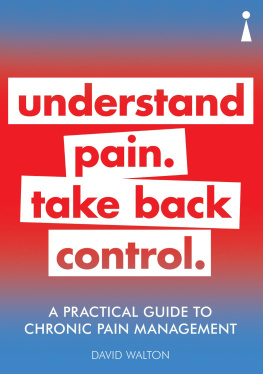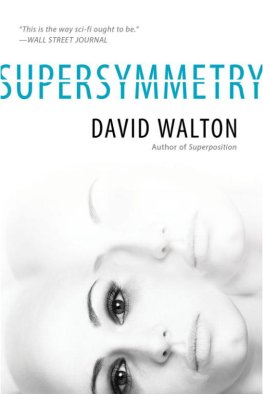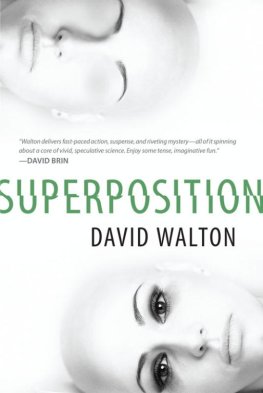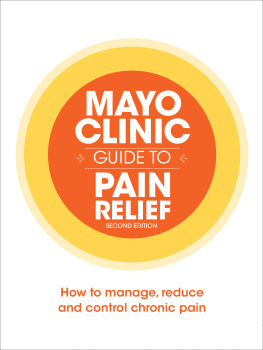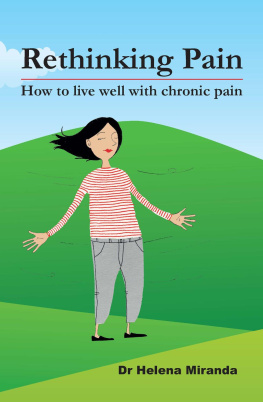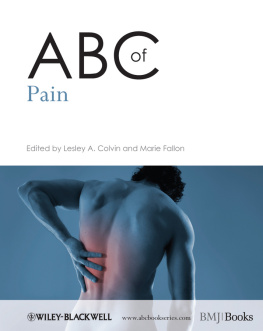Many people have helped turn the idea for this book into reality. Kiera, my Icon editor, did a magnificent job rescuing the book from being a barely readable medicalised tome. She improved it immeasurably. My experienced clinical reviewers (Beth and Tony, Chris and Alan, Ayesha, Mark and Austin) who contributed thoughts and ideas for the content and focus and my family (Liz and Ros) for putting up with me as it was written. My thanks.
Introduction
I have just come into my office from the garden, having enjoyed a few minutes in the all too rare Yorkshire sunshine. I had been contemplating the themes this book should cover when my wife Liz called to me, Just be careful. Dont do too much out there!
Fifteen years ago, I had a serious riding accident, and everything changed. I have the aftermath of a spine fractured in five places, various hip and neck problems, osteoarthritis, diabetes and a knee which must be resurfaced, after the opposite hip gave way it is currently awaiting replacement surgery. These, together with insomnia, fatigue and a possible cardiac condition, now give me the chronic pain which many people I have worked with in pain clinics suffer.
So, in calling out to me, Liz was generously expressing concern because Im still wobbly on the crutches and she didnt want me to hurt myself. However, in those nine words she had encapsulated a significant problem for anyone trying to manage pain. Its great to have someone who cares. But as the butt of examinations, tests, operations and advice about health from every quarter, it can feel all too easy to descend into the role of a dependent patient, becoming reliant on medics and carers, giving away control, asking too few questions and reacting passively. Its almost inevitable when you are very ill, are unable to do much and the treatment is in the hands of professionals.
But for those of us with chronic pain where the conditions causing it cannot be easily cured, this outlook is problematic. When our thinking becomes passive, giving away control and ruminating on our limitations and pain episodes, it creates changes in our nervous systems and body chemistry, paradoxically making pain more likely.
This view has been shaped by my work with brilliant researchers, colleagues and patients whose daily struggles have put my own pains completely in the shade. I have spent time with colleagues from the British Pain Society and International Association for the Study of Pain, who encourage research and collate the enormous amount of new knowledge on the subject. The emerging evidence about the role of psychological processes in nociception pain awareness and control is particularly impressive, as are the experiences of chronic pain patients trying the resulting newly developed approaches.
This book draws upon pioneering work by, among others, neuroscientist Lorimer Moseley, clinical educationalist David Butler and psychologists Aaron Beck and Martin Seligman supported by what I will call the neuroscience revolution, which shows that pain control owes much to the individuals understanding of how tissue injuries, the brain and our nervous systems work together. This is much more complex than the power of positive thinking alone. As a practical introduction to this subject, the book will explore some of these exciting new ideas about pain management in (hopefully) a common-sense, non-clinical way.
Chronic pain, for those experiencing it, can be severe and disabling. World Health Organisation (WHO) data show it is an enormous health problem. Globally, it is estimated that as many as one in ten adult individuals are newly diagnosed with chronic pain each year. About one in five, or about 1.5 billion people, suffer from chronic pain, with prevalence increasing with age. Arthritis, post-operative, nerve damage and cancer pain are the leading causes. Reliable estimates indicate chronic pain prevalence at between 25 and 50 per cent in the US and Europe.
In the UK, recent statistics show that 43.5 per cent of the population experience chronic pain. Approximately 8 million people in the UK say their pain is severely disabling, and the Chief Medical Officer reports that 16 per cent of sufferers feel their pain is so bad that they sometimes want to die. As if that werent bad enough, a quarter of joint pain sufferers lose their jobs, resulting in a poor quality of life. Studies show that lower back pain is ranked highest in terms of the burden of disease (out of 291 conditions). Four of the top twelve disabling conditions globally are persistent pain conditions.

